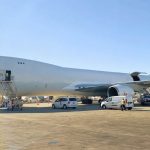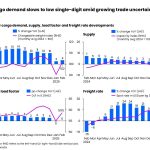Asian cargo volume down by 5.3% in 11 months of 2019
Air cargo volumes for Asian airlines fell 5.3% during the first 11 months of 2019 compared with the same period in the previous year.
The figures, released by the Association of Asia Pacific Airlines (AAPA), showed that freight ton-kilometer in November last year was 1.9% lower than in the same month 2018.
Offered freight capacity for the 15 AAPA airlines rose by 1.2% year-on-year, leading to a two percentage point decline in the average international freight load factor to 62.9% for November 2019.
Andrew Herdman, director-general of Kuala Lumpur-based AAPA, said that challenging business conditions resulting from protracted trade disputes had dampened demand for freight.
“Asian airlines were particularly vulnerable, given the region’s importance in the global manufacturing supply chain. The outlook for air cargo demand remains overshadowed by uncertainty over the resolution of ongoing global trade disputes,” Herdman said.
“The region’s carriers remain vigilant in monitoring and responding to changes in market conditions, whilst seeking new growth opportunities.”
In contrast, the airlines, which are based in 11 countries, including China, Japan, Indonesia, Malaysia and Thailand, carried 3.4% more passengers in November last year than in the same month in 2018, recording a total of 30.3 million. There was a 4.2% growth in passenger numbers over the first 11 months of last year, compared with 2018, to a combined total of 342 million international passengers.
Herdman said this had been achieved “despite falling business confidence levels and corresponding moderation in economic activity across regions”.
He added: “Tourism activity continued to lend support to leisure travel, with growth within the region boosted by the availability of affordable airfares.”














